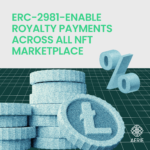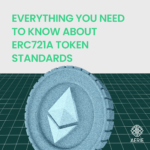Multichain Blockchain
Blockchain has shown great potential to disrupt various industries. The technology can fundamentally change our social structure and ways of living. Recently, it has become increasingly popular since it’s all about making things decentralized, scalable, and secure.
But, there’s a catch. There’s something called the blockchain dilemma. Most blockchains can only excel at two of these features and, therefore, must sacrifice the third. This limitation has led to the development of new solutions, such as multichain, which can help address this issue and improve blockchain technology.
Layer 1 Blockchain
First, it is essential to define blockchain layer 1 and multichain.
The basic foundation of a blockchain is called layer 1. It includes how the blockchain agrees on what transactions are valid, how data is stored, and how computers talk to each other. Decentralization, scalability, and security are three critical elements of blockchain layer 1.
Decentralization ensures that no single entity controls the network, which makes it more resistant to fraud and hacking. A decentralized network allows users to control their data and eliminates the need for intermediaries.
Scalability ensures that the network can handle many transactions and users, even as the network grows. Layer 1 blockchains, such as Bitcoin, face such challenges as the number of transactions that can be processed is limited.
Security is crucial because it helps prevent malicious actors from manipulating or stealing data. We have seen billions of dollars lost in past years due to malicious events, causing trust issues for users regarding the reliability of blockchain.
Multichain, as we mentioned earlier, can help address the blockchain dilemma. Instead of blockchains being isolated entities with unique features and characteristics, multichain connects smaller blockchains, allowing them to talk to each other using a common language. This makes sharing and using information between blockchains easier and helps make them more flexible, scalable, and customizable.
Multichain for building applications
Multichain can provide developers with greater flexibility and customization when building blockchain-based applications. By allowing developers to choose the specific chain that best fits the needs of their application, they can optimize for specific features such as security, privacy, or scalability. This can result in more efficient and effective applications that are better tailored to the specific needs of users.
One of the key advantages of multichain is the ability to create interoperable applications, where applications built on different chains can communicate and share data with each other. This opens up a new world of possibilities, enabling greater collaboration and innovation in the blockchain space, as developers and users can take advantage of the strengths of different chains and combine them in new and creative ways.
Digital Identity
Digital identity is becoming increasingly important in our digital age. Today’s digital identity is managed by intermediaries such as governments, banks, and social media platforms. These intermediaries have the power to control and manipulate our data, and they often use this power to their advantage. Blockchain technology offers users the solution to the problem by allowing them to manage their digital identity on a decentralized network. This gives users more control over their data, eliminates the need for intermediaries, and enables organizations to verify identities more efficiently, reducing the risk of fraud and identity theft.
Digital identities cover lots of areas and types. Some are private, like personal identities, and medical records, which require a high degree of security and decentralization. Some are qualifications that need to be shown to organizations, like professional qualifications, academic certificates, and records of achievements, which require high accessibility of verification and are able for others to visit. Some are like your virtual identities to access digital communities, games, and metaverses, which require interoperability to applications. These digital identities also can be issued by parties with different blockchains, regardless of public or private. Thus, multichain is the circumstance we can foresee in the future to support the complex scenarios of digital identities.
Games
Gaming is a multi-billion-dollar industry, and the integration of blockchain technology into gaming has the potential to revolutionize the way games are developed and played. Currently, most gaming platforms are centralized. It is difficult for users to truly own and control their virtual assets. It also makes it easy for the platform to manipulate the market.
For game infrastructure, there is a lower need for decentralization than scalability and security. A self-running game might be too early to expect, where scalability to fulfill the growing number of gamers and security to ensure users’ assets’ safety and prevent malicious malware from the game are higher priorities. Games would definitely not be developed and limited in one single chain, and they could potentially migrate to another for better needs. There will also be game platforms or infrastructure that connect to games like Steam, Discord, and Twitch, that we can see in the current world. Each game, platform, and infrastructure developer will pick or develop the blockchain that matches the most. The question later would be how to communicate across chains with each other.
Payment Systems
Another area where multichain can be especially useful is in the realm of finance. With traditional payment systems, transactions can take several days to complete and often incur high fees. This can make it difficult for people to access their funds, especially in times of financial hardship. With blockchain, transactions can be completed quickly and securely, with much lower fees. This makes it a valuable tool for people who need access to their funds on time and privately.
We are seeing countries experimenting with Central Bank Digital Currencies (CBDC), preparing for digitalizing the fiat currencies, and holding back such financial power in their hands. For security and control reasons, these entities would instead develop their own chain for such purposes. More, a payment system built on a chain would also attach with different applications to provide payment services, where the application’s chain can focus on giving decentralization and scalability. The payment service chain can focus on delivering security.
Final Thoughts
The blockchain industry is still in its early stages, and there are many different approaches and solutions being developed and tested. Multichain offers many advantages as it is an innovative solution that addresses the blockchain dilemma by connecting multiple blockchains and allowing them to communicate with each other.
As blockchain continues to evolve, multichain will undoubtedly play an important role in improving its scalability, security, and decentralization, making it the next big thing in blockchain technology.









